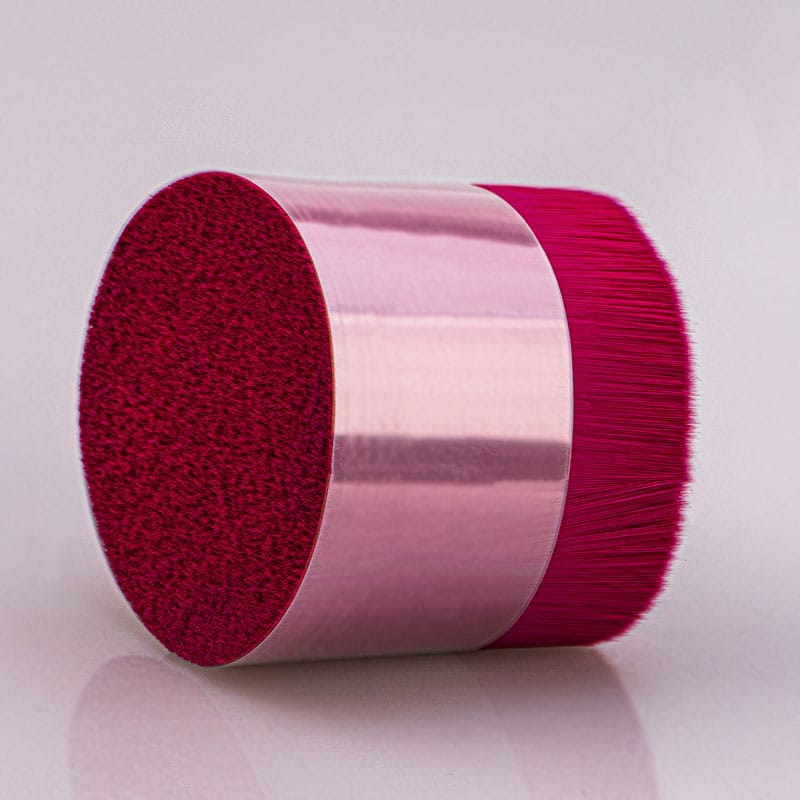Environmental Responsibility in Synthetic Fiber Manufacturing
The increasing demand for synthetic fibers in industries such as beauty, fashion, and cleaning has brought with it a responsibility to minimize the environmental impact of production. Manufacturers are now under growing pressure to adopt sustainable practices that reduce pollution, conserve resources, and align with global efforts toward environmental preservation. This article explores how synthetic fiber manufacturers are taking significant steps toward a greener future through innovation, efficiency, and eco-friendly practices.
1. Reducing Environmental Impact: Challenges in Synthetic Fiber Manufacturing
Synthetic fiber production traditionally relies on petroleum-based materials, such as PBT (Polybutylene Terephthalate) and PET (Polyethylene Terephthalate). These materials are prized for their durability and versatility but come with notable environmental drawbacks:
- Energy Consumption: The processes involved in polymerization, extrusion, and fiber finishing are energy-intensive.
- Non-Biodegradability: Most synthetic fibers take decades to decompose, contributing to landfill overflow and microplastic pollution.
- Emissions: The production of synthetic fibers is a significant source of greenhouse gas emissions.
Addressing these challenges requires innovative approaches and a commitment to sustainability throughout the manufacturing process.
2. Sustainable Material Innovations
a. Biodegradable Additives for Enhanced Sustainability
One of the most promising advancements in synthetic fiber production is the integration of biodegradable additives. For example, adding anaerobic catalysts to PBT allows it to break down in environments where oxygen is limited, such as landfills. These additives encourage microbial activity that accelerates decomposition, offering a practical solution to the issue of waste accumulation.
b. Alternative Materials
Some manufacturers are exploring bio-based polymers, derived from renewable resources like cornstarch, sugarcane, or castor oil. These alternatives not only reduce reliance on fossil fuels but also exhibit similar physical properties to traditional synthetic fibers, ensuring performance is not compromised.
c. Recycling PET and Other Polymers
Recycling existing plastics into new synthetic fibers is another avenue gaining traction. By transforming post-consumer PET bottles and packaging waste into high-quality fibers, manufacturers can significantly reduce the environmental footprint of their products.

3. Energy Efficiency and Waste Reduction
a. Streamlined Production Processes
Improved machinery and production methods can reduce the energy required to manufacture synthetic fibers. Efficient extrusion and drawing technologies not only lower energy consumption but also produce fibers with consistent quality, minimizing material waste.
b. Closed-Loop Systems
Implementing closed-loop production systems helps capture and reuse byproducts, such as water, solvents, and dyes, rather than releasing them into the environment. This practice is particularly relevant during the dyeing and finishing stages, which traditionally involve significant water and chemical usage.
c. Waste Management Practices
Synthetic fiber manufacturers are increasingly adopting zero-waste policies, where every byproduct is repurposed. For example, trimmings from fiber production can be recycled back into the manufacturing process or used to create composite materials for other industries.
4. Innovations in Fiber Design to Reduce Environmental Impact
a. Lightweight and Durable Fibers
Producing fibers that are both lightweight and durable reduces material usage without sacrificing performance. These innovations are particularly valuable for disposable products like single-use eyelashes or cleaning brushes, where reduced material use can have a cumulative positive impact.
b. Optimized Cross-Sections for Efficiency
Designing fibers with specific cross-sections can enhance performance while reducing the amount of material needed. For instance, hollow fibers require less raw material and offer additional benefits like improved flexibility and lightweight characteristics.
5. Responsible Supply Chain Practices
a. Sourcing Renewable Energy
Switching to renewable energy sources, such as solar or wind power, for manufacturing operations is an essential step toward reducing the carbon footprint of synthetic fiber production. Many companies are now investing in energy-efficient factories and adopting renewable energy systems to meet sustainability goals.
b. Ethical Sourcing of Raw Materials
Working with suppliers who prioritize sustainable practices ensures that the environmental impact is minimized at every stage of production. This includes sourcing polymers that are certified as eco-friendly and implementing transparent supply chain practices.
c. Transportation Optimization
Reducing emissions from the transportation of raw materials and finished goods is another area of focus. Manufacturers are optimizing logistics by shortening supply chains, using eco-friendly packaging, and transitioning to electric or low-emission vehicles for distribution.
6. The Role of Industry Collaboration and Certification
a. Certification Standards
Achieving certifications such as ISO 14001 (Environmental Management Systems) or Global Recycled Standard (GRS) assures customers that manufacturers are meeting rigorous environmental standards. These certifications also push companies to continually improve their sustainability practices.
b. Collaboration with Industry Leaders
By partnering with environmental organizations and research institutions, manufacturers can stay ahead of regulatory requirements and adopt best practices for sustainability. Collaborative efforts often lead to innovations that benefit the entire industry.
7. The Consumer’s Role in Driving Change
Consumer demand for eco-friendly products is a powerful motivator for manufacturers to embrace environmental responsibility. By prioritizing sustainability in their purchasing decisions, consumers encourage the development of greener production methods and sustainable materials.
Environmental responsibility in synthetic fiber manufacturing is no longer an option—it’s a necessity. Through innovations in materials, energy efficiency, waste reduction, and supply chain practices, the industry is moving toward a more sustainable future. As manufacturers continue to adopt greener practices, they are not only minimizing their environmental impact but also meeting the demands of conscious consumers. Together, these efforts ensure that synthetic fiber production can thrive in harmony with the planet, paving the way for a future that values both performance and sustainability.










Leave A Comment